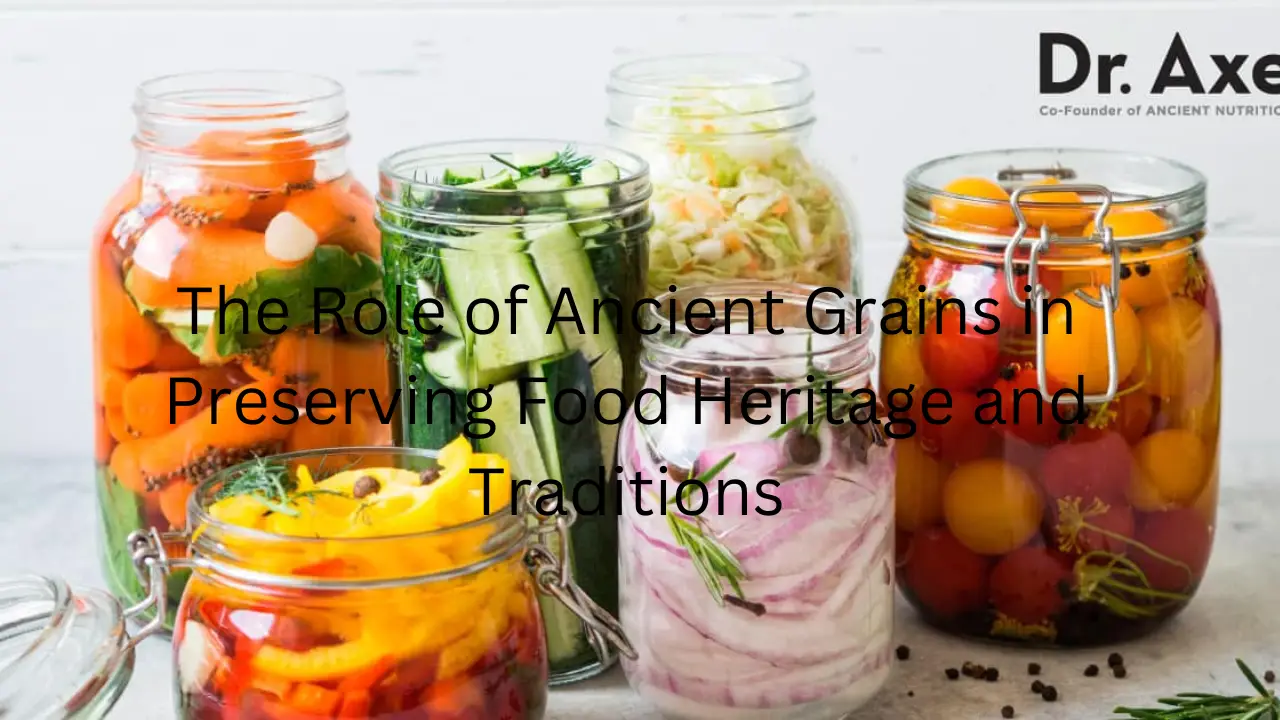
DFAGIE Fly Trap Indoor(1 Device + 5 Glue Cards), Plug-in Flying Insect Trap for Mosquito, Flies, Fruit Flies, Moths, Gnats, Gnat Trap for House Indoor, White
58% OffThe Role of Ancient Grains in Preserving Food Heritage and Traditions
In the modern world where fast food and convenience have taken center stage, there’s a yearning for a connection to our roots, to the traditions that have shaped our cultures and cuisines. Enter ancient grains – a treasure trove of history, flavor, and nutrition that not only offers a healthful alternative but also plays a pivotal role in preserving food heritage and traditions.
Bridging the Gap Between Past and Present
Nourishing More Than Just Bodies
A Culinary Time Machine
Sorghum: From Ancient Ears to Modern Tables
Sorghum, with its rich history dating back thousands of years, has been a staple in many African and Asian diets. Its versatility in dishes ranging from porridges to flatbreads highlights its enduring relevance.
The Legacy of Millet
Millet, cultivated for over 10,000 years, is a drought-resistant grain that’s been cherished in African, Asian, and European cuisines. Its resilience and adaptability echo the resourcefulness of our ancestors.
Ancient Grains: Guardians of Culinary Traditions
Savoring the Flavors of the Past
Quinoa: An Andean Delicacy
Quinoa: More Than Just a Salad Staple
Quinoa has been a dietary cornerstone for the Andean people for millennia. From soups to stews, its role in traditional dishes showcases its ability to seamlessly integrate into various culinary customs.
Emmer Wheat: An Italian Icon
Emmer wheat, or farro, has deep roots in Italian cuisine. Its use in rustic soups, bread, and pasta dishes is a testament to its enduring presence on Italian tables.
Teff: Ethiopia’s Nutrient-Rich Gift
Injera: The Heart of Ethiopian Cuisine
Teff’s crown jewel, injera, is a sourdough flatbread that serves as both sustenance and a cultural emblem. Its central role in communal dining emphasizes the significance of ancient grains in fostering togetherness.
The Cultural Connection: Ancient Grains and Traditions
When Food Tells a Story
Passing Down the Plate
Amaranth: Mexico’s Ancient Superfood
Amaranth’s association with Aztec rituals and celebrations has transcended time. Its use in sweets, tamales, and beverages during festivities keeps the spirit of the past alive.
Indigenous Wisdom and Wild Rice
Wild rice isn’t just a grain; it’s a sacred symbol for many indigenous communities in North America. Its harvest and preparation reflect a deep-rooted respect for nature and tradition.
Sustainability and Legacy: Ancient Grains in the Modern Context
Feeding the Future While Respecting the Past
Rediscovering Forgotten Treasures
Einkorn: From the Fertile Crescent to the World
Einkorn, one of the earliest cultivated grains, is regaining popularity due to its nutritional density and low environmental impact. Its resurgence signifies a harmonious blend of ancient wisdom and contemporary concerns.
Embracing Diversity with Fonio
Fonio, a West African grain, is not only nutritious but also thrives in challenging growing conditions. Its integration into global markets supports rural economies and preserves cultural heritage.
Conclusion
Ancient grains aren’t merely ingredients; they’re vessels that carry the stories, flavors, and wisdom of generations past. As we embrace healthier eating habits and strive for a connection to our roots, these grains play a pivotal role in bridging the gap between tradition and modernity. With every meal that features ancient grains, we pay homage to the resilience of our ancestors while paving the way for a healthier, more flavorful future.
FAQs
Q1: Can I substitute ancient grains for modern grains in any recipe?
While ancient grains can often be used as substitutes, keep in mind that they may have different textures and cooking times. It’s a good idea to experiment and adjust recipes accordingly.
Q2: Are ancient grains environmentally friendly?
Yes, many ancient grains require less water and pesticides compared to their modern counterparts, making them a more sustainable choice.
Q3: Are ancient grains gluten-free?
Some ancient grains, like quinoa and amaranth, are naturally gluten-free. However, it’s important to check labels and ensure that the grains haven’t been cross-contaminated with gluten-containing grains during processing.
Q4: How do ancient grains contribute to cultural diversity?
Ancient grains are deeply rooted in various cultures around the world. By incorporating them into our diets, we celebrate and preserve cultural diversity while enjoying their unique flavors and benefits.
Q5: Where can I find ancient grains for cooking?
You can find a variety of ancient grains at health food stores, specialty markets, and even online retailers. Make sure to store them in a cool, dry place to maintain their freshness.











